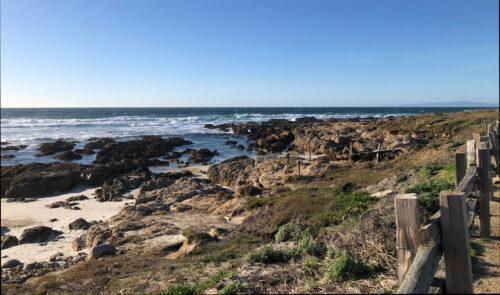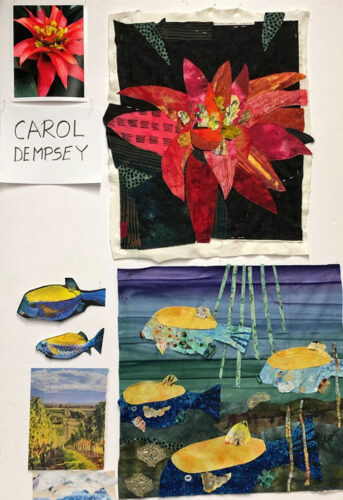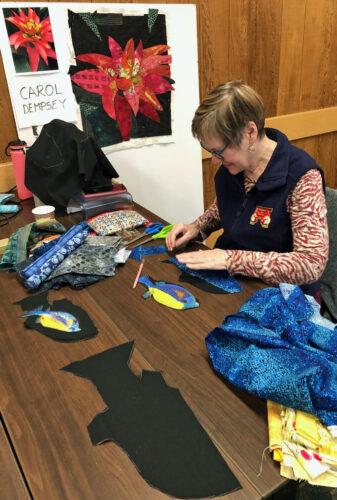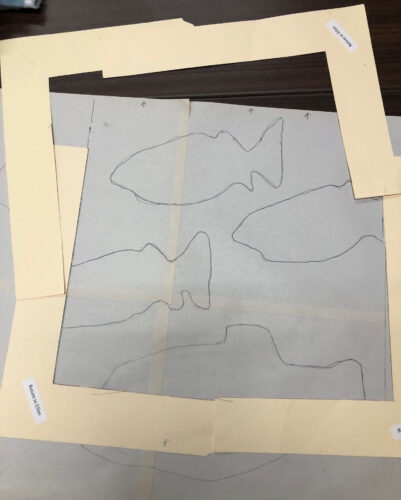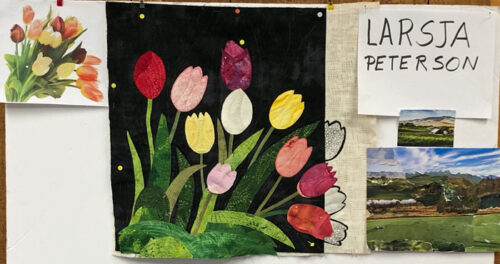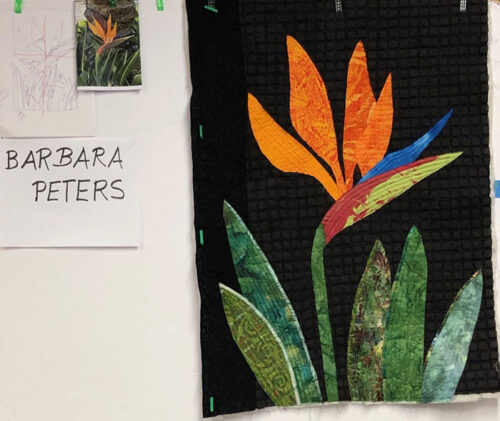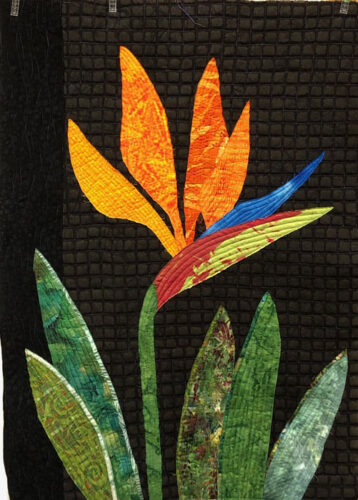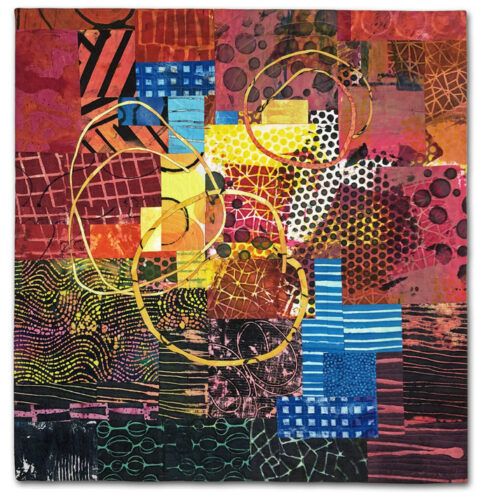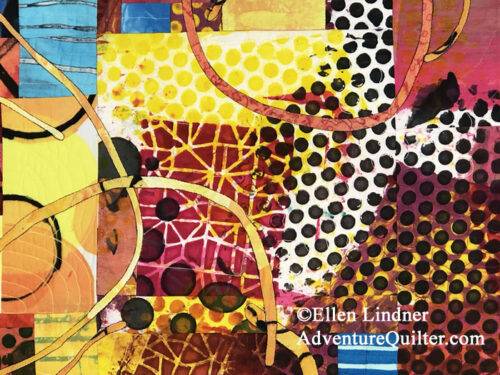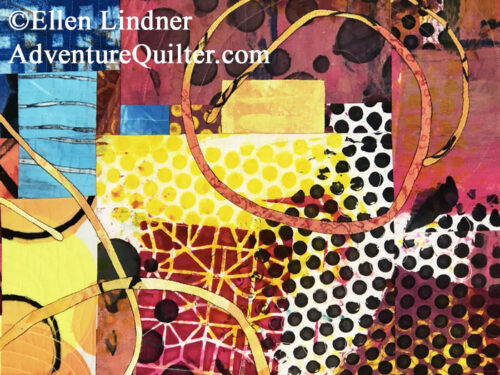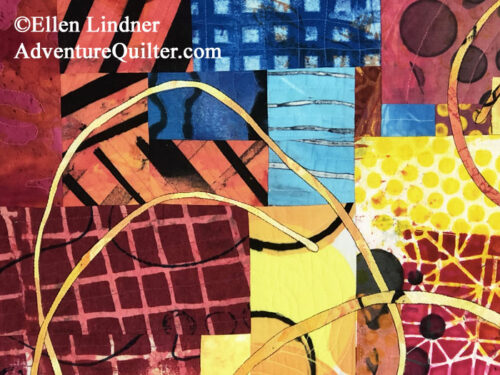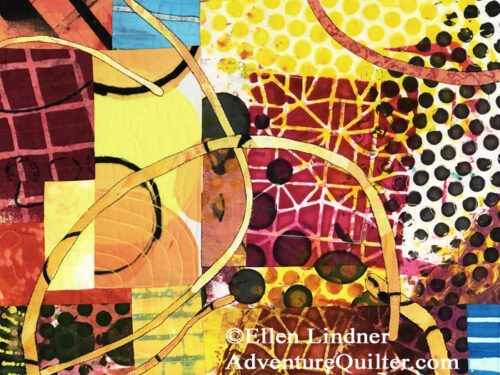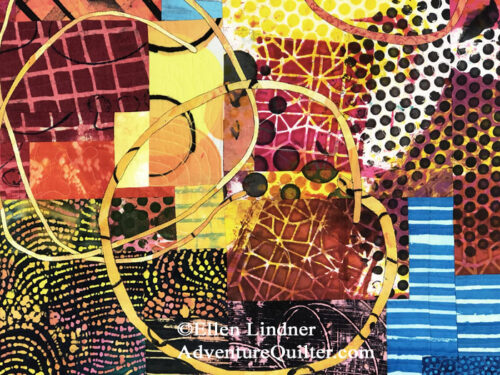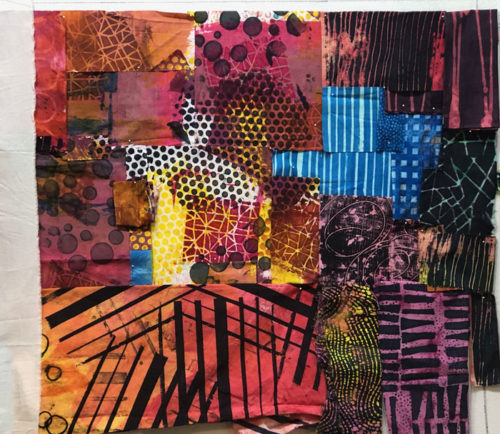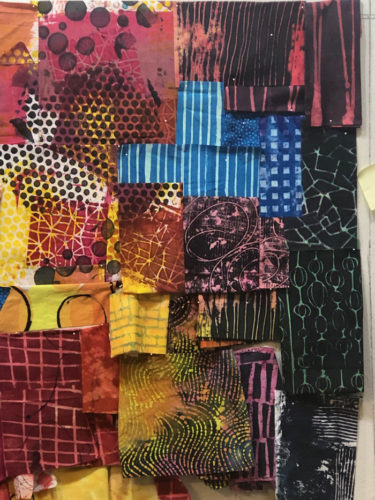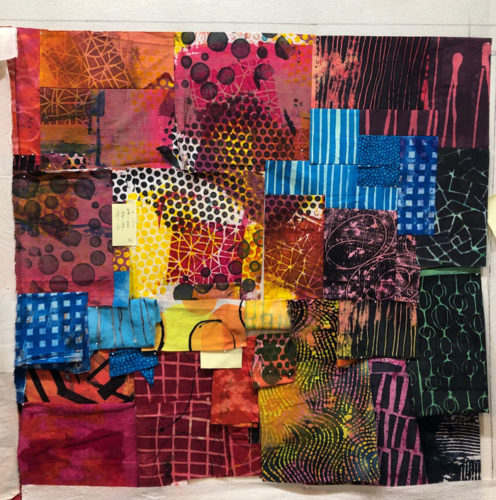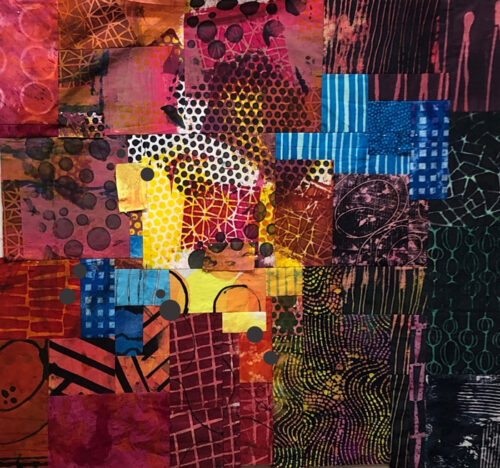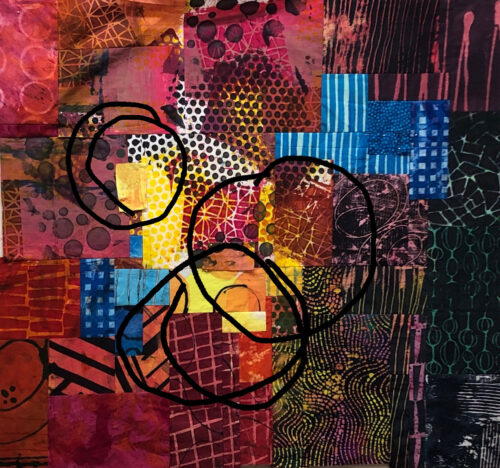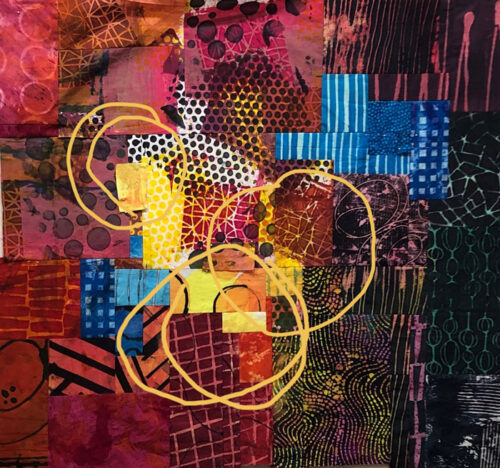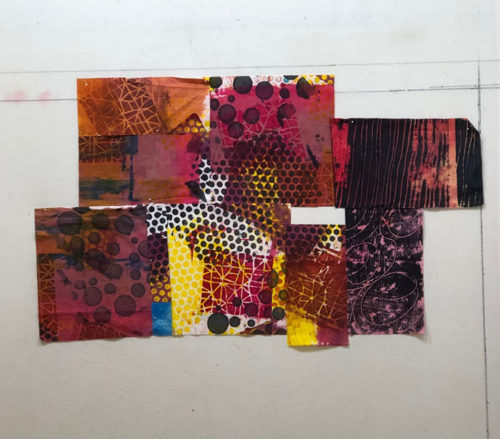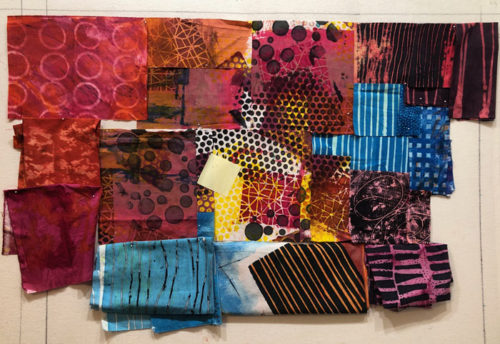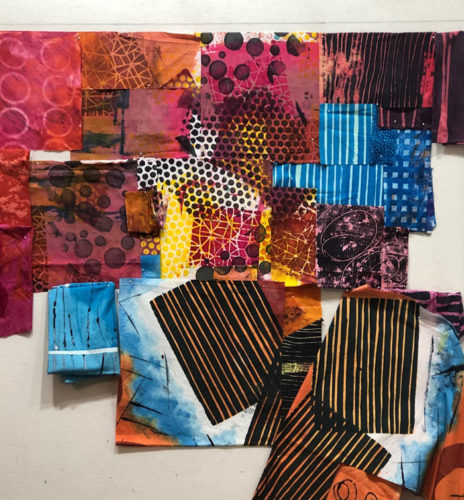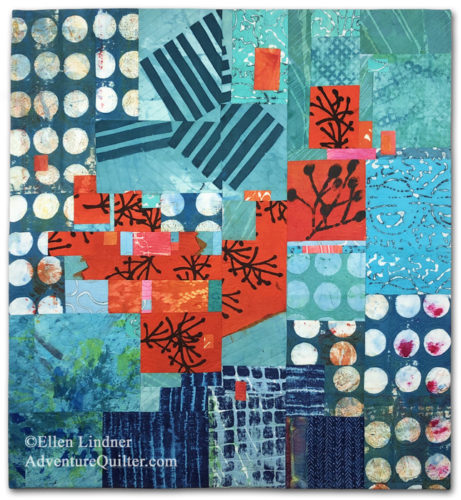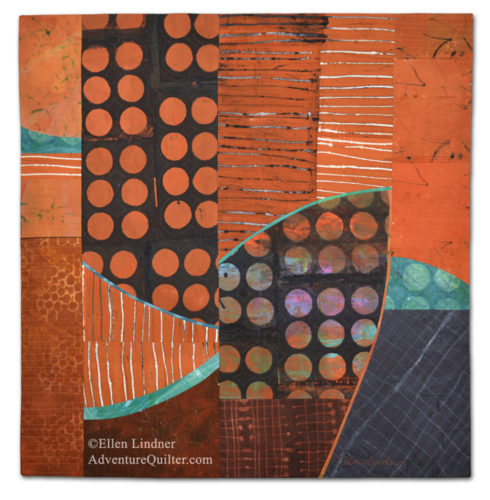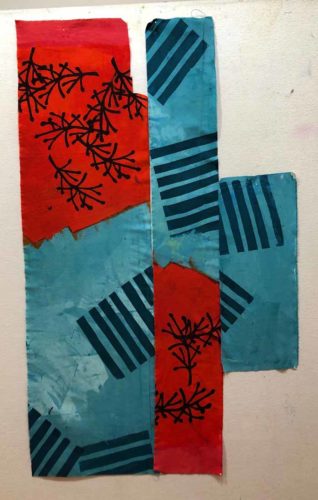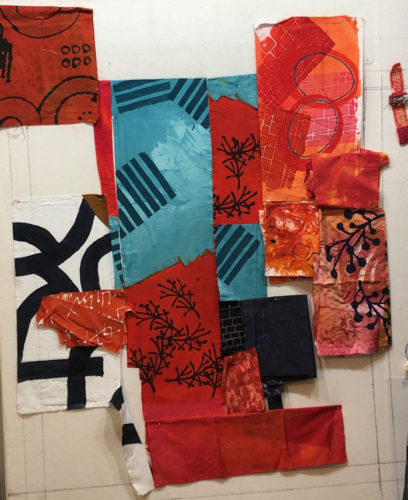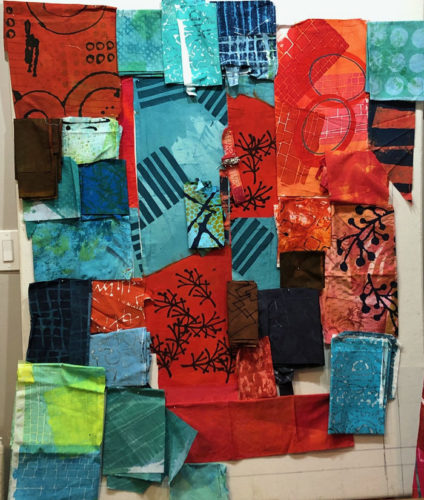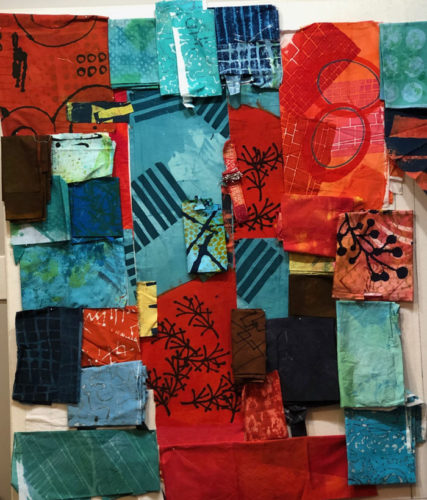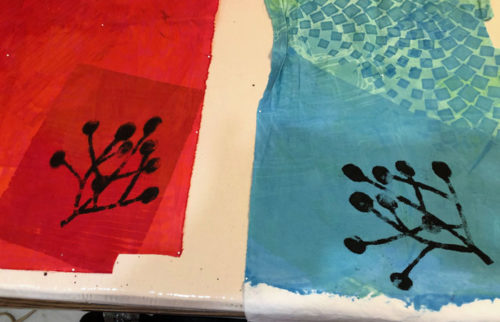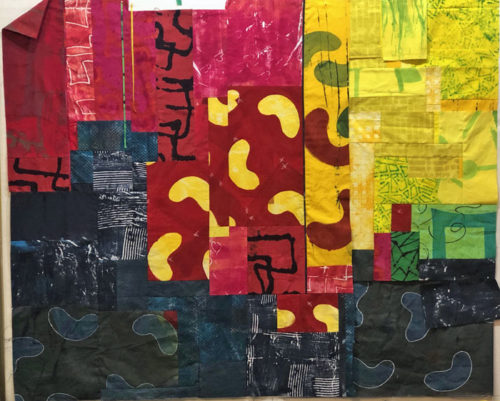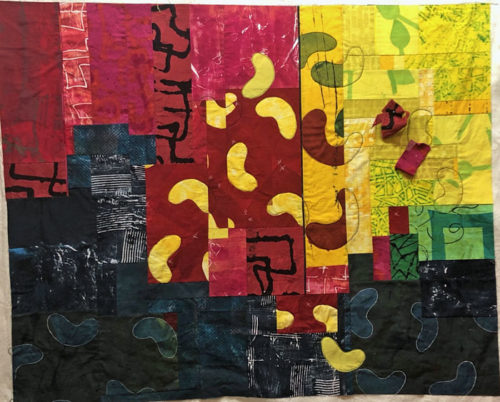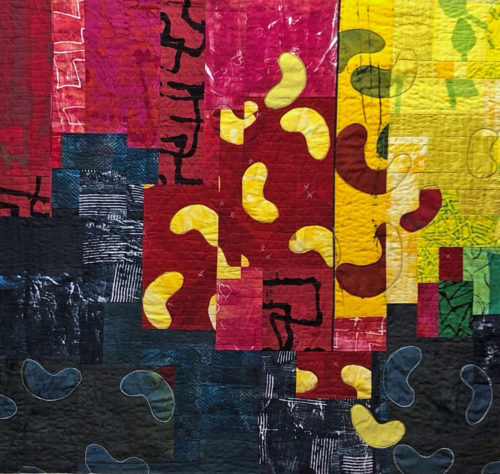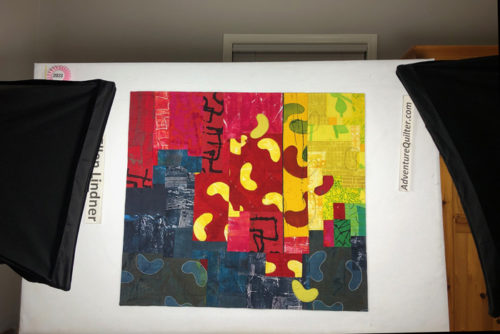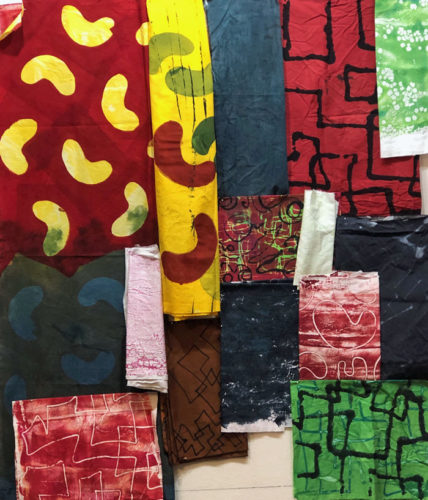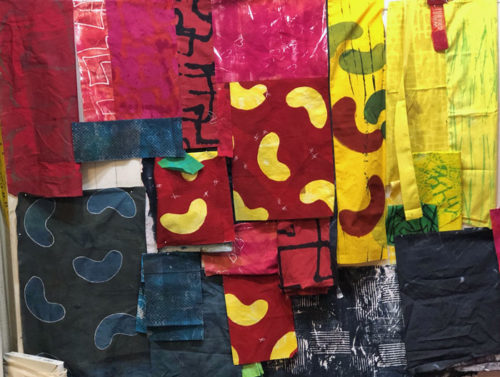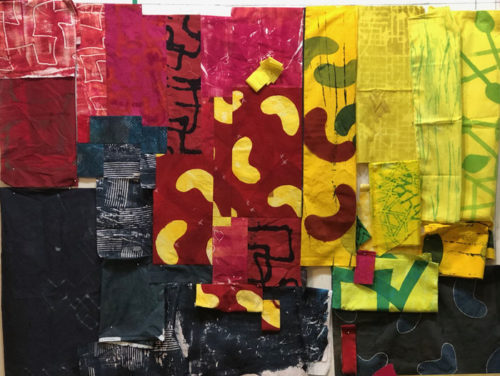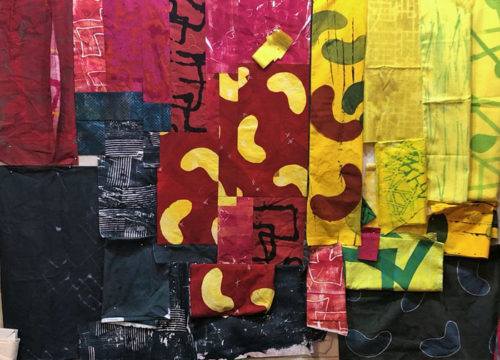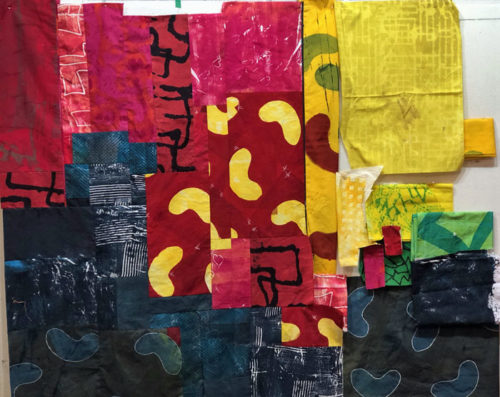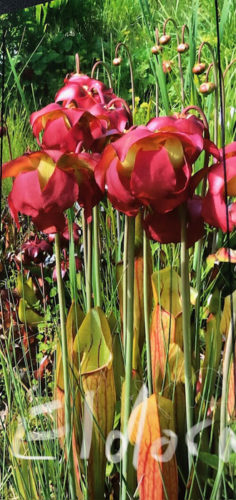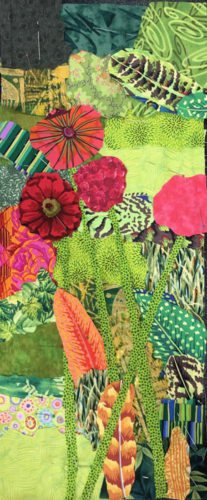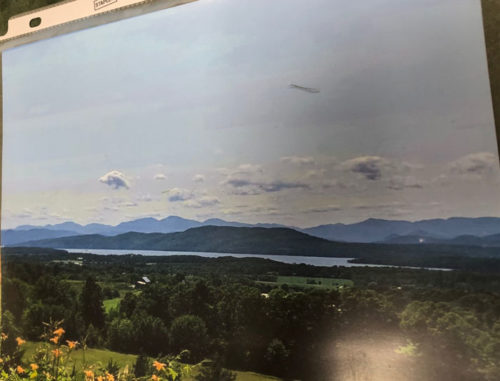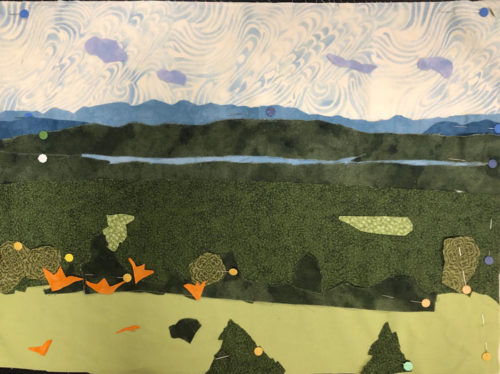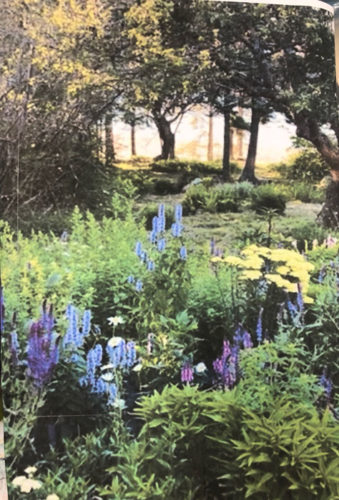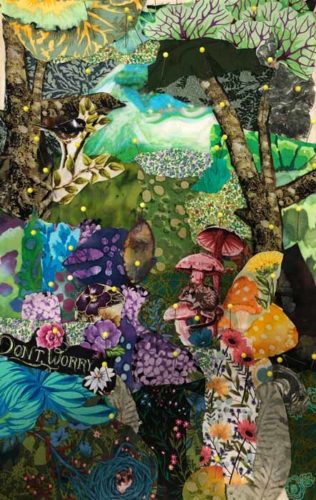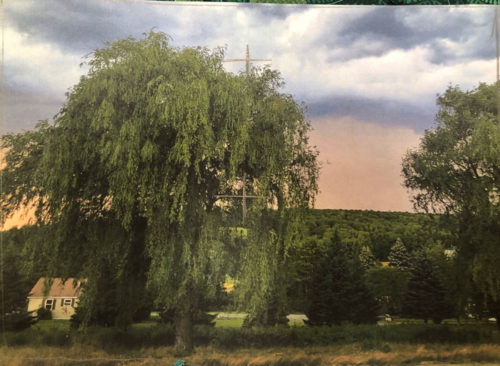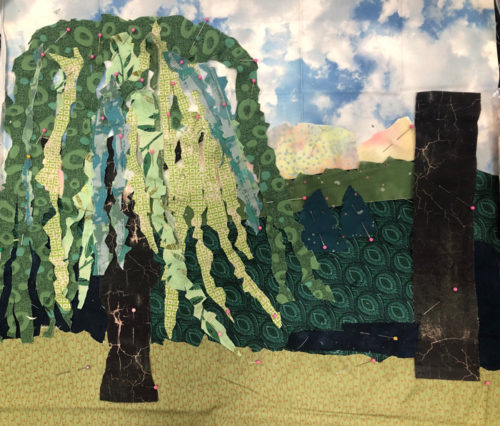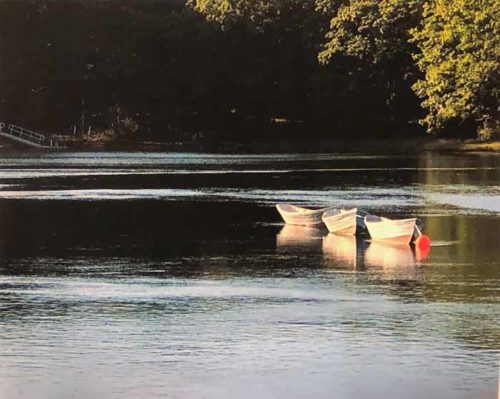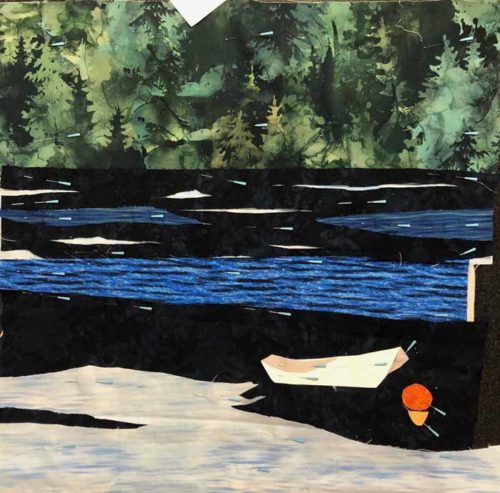My week teaching Design Your Own Nature Quilt at Empty Spools Seminar was excellent and my students were fantastic! They brought their creative courage and tried lots of new things – with amazing results.
This was Alex’s board for the classroom walk-through. She did the little plant on the left first. She played down the contrast in the rocky foreground and increased the contrast with the leaves. Alex also enhanced the plant’s “body language” and removed some distracting details. As you can see, she had it all pinned and ready to quilt.
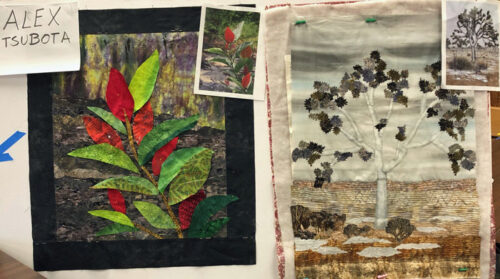
Next, Alex switched gears to the Joshua Tree photo. I thought it was more complex than she would enjoy, but I was wrong! She enjoyed hunting for the perfect fabrics and cutting all the little “pom-poms.” She has more to add when she gets home, but she quilted the foreground in class. (By the way, I had never seen a Joshua tree before and thought her photo was actually a drawing when I first saw it. My students were very good at educating me about them.)
Alex was also quick to help. She solved my Power Point issue and gave Lucy a great lesson on cleaning her machine. ALL the students had a great sense of camaraderie and cheered each other on. I loved it!
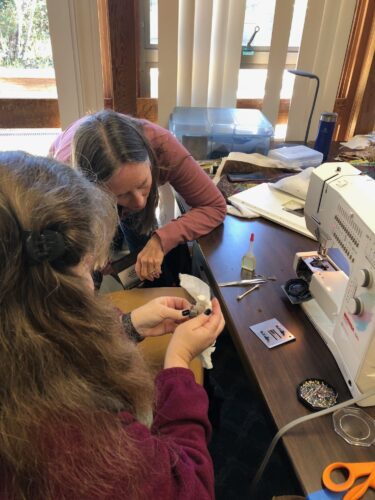
Terry was experienced at creating landscapes and it showed. Her first piece is the large one at the top of her board. She switched gears when she realized she had the perfect fabric at home. (Isn’t that always the way?) Check out her gray/black mountain in the top left of her composition. It’s a perfect example of letting the fabric do the work. Terry needed a black and white striation. She found it on the back of a printed fabric with palm fronds. Good eye!
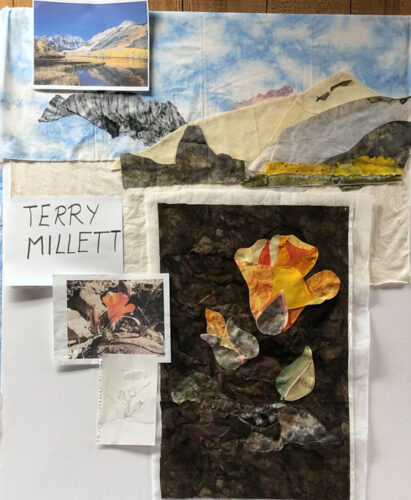
I forget the name of Terry’s orange flower: some sort of lily. She did a great job of capturing the delicate petals. And just look how much the dark background has improved the composition! The additional contrast it provides really lets the flower SHINE! Terry plans to use a border and let the top part of her flower extend into it. I think that will be very effective. And she has some leaves to add, too.
Katie definitely brought her CAN DO attitude. Her experience was limited to simple piecing, so this was all new territory for her! She trusted the process, though, and forged ahead. There were times when she thought it was terrible, but she trusted my direction and eventually ended up with something she loved. Me too!
Here’s her inspiration photo. We talked about her favorite parts and how she could apply our class motto, “Be inspired by your photo, not controlled by it.” She decided to focus on busy flowers, the strong blue sky, and the arcing stems.
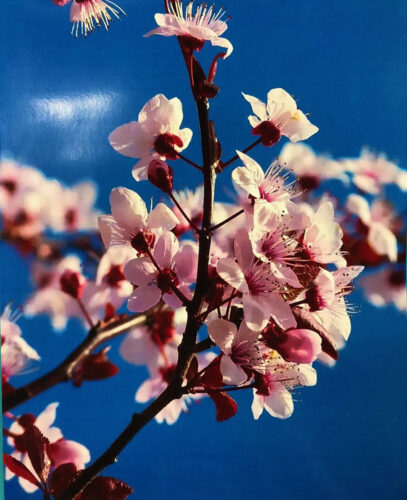
And this is what she got. I’d say she definitely hit the mark. AND this is completely quilted, faced, and has a hanging sleeve attached!!!
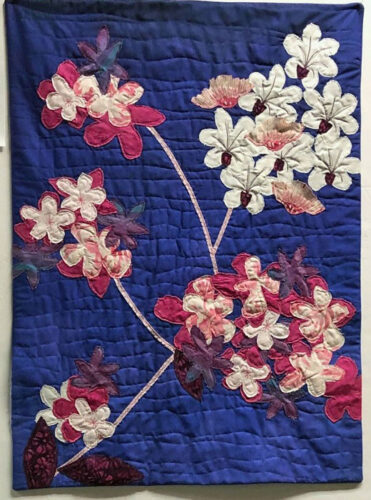
As I told my students, “they made me look good.” And we had so much fun, too!
There’s more to come. Keep and eye out.
Ellen Lindner
P.S. See more student work.

